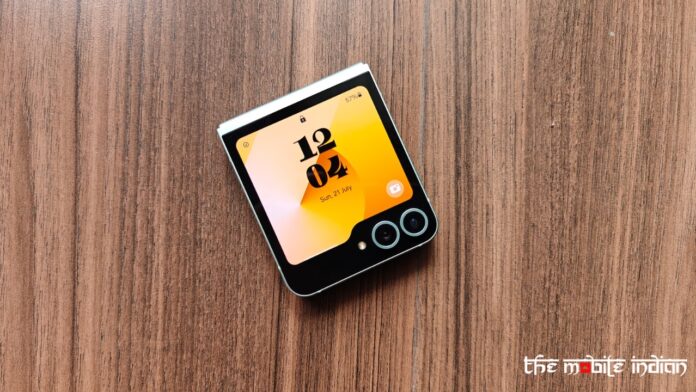Foldable smartphones, with their futuristic designs and multi-functionality, are marketed as the next evolution in mobile technology. However, despite the buzz surrounding them, I remain unconvinced about their practicality and appeal, at least for the next few years, due to my own personal experience with a Galaxy Z Flip 4 from Samsung and also because of the experiences of people around me owning a foldable.
One of the biggest issues in foldable, to date, is durability. No matter the IP rating of these foldables, and even if they haven’t been near water, the display is likely to fail at some point during their lifetime, something my experience tells me.
Samsung has been making foldables and commercially selling them since 2019 and the brand has always tried to perfect the process of creating a foldable. Despite those measures being adopted, my Galaxy Z Flip 4 died about a year ago in September 2023, shortly after it came out of its warranty period in August 2022, and all of it began happening after an update. The device met a gradual demise, starting with the display suddenly glitching, turning green and flickering uncontrollably.
The final nail in the coffin was when the device would just shut down as soon as it got folded. The Samsung service centre handed me over a bill of around Rs 33,000 to completely replace the inner foldable display because it was out of warranty, and despite telling them that the device hadn’t been near water or hadn’t fell even once which they could see as the device didn’t have any damage apart from minor wear and tear whose cause was the case I was using with the device.
Read More: Samsung Galaxy S24 FE, Galaxy Tab S10 Series Announced With No Base Model Tab S10
Fortunately, I got it repaired from another Samsung service center, where I personally knew an employee who had to merely replace a part inside the device, which they referred to as “Flex cable. ” This somehow also solved the device’s wireless charging problem, which had also stopped working. What did it cost? Rs 2,000. Yes, you heard that right.
After an official repair, the device worked well for about five months. Then, the screen protector began to show bubbles within the area of the crease, and before I could get it replaced, the display died once again. This time, it was the display that was faulty, not the cable that got repaired earlier, even though the device didn’t fall or get wet once after the repair. A bill of Rs 33,000 again stood on top of my head.
Now, the same device is sitting as a paperweight in my drawer, as I chose not to get it repaired and instead get a OnePlus Nord 4, which actually cost me the same as the display repair cost of the Galaxy Z Flip 4.
As if that wasn’t enough, two of my relatives have had the exact same issue with their Samsung foldable, all within the last two months. Coincidentally, both of them also had a Galaxy Z Flip 4.
While I definitely liked the Galaxy Z Flip 6’s design, note that even my Flip 4 worked without any issues for a year before showing signs of struggle. In other words, I still cannot guarantee the Z Flip 6 would work for years because I haven’t used it enough. In addition, Samsung promises the device 7 years of OS updates but my experiences make me think, will it even last that long?
My bitter experiences with Samsung’s foldable make me wonder if a brand that has been selling foldables for six straight years hasn’t been able to perfect the device. Then how can I trust newer entrants in the space?
Samsung definitely makes some of the best Galaxy slab-style flagships under its S-series, and I have said time and again that their Galaxy S23 Ultra has been treating me well for the past 1.5 years but unfortunately I cannot say the same yet for its foldables.
Although brands have significantly improved hinge mechanisms and display technology, foldable phones are still prone to wear and tear much faster than their traditional counterparts. The folding screens, made from plastic polymers or ultra-thin glass, remain more susceptible to scratches and dents. Given the premium prices of these devices, consumers should expect sturdier build quality, which foldables have yet to consistently deliver.
Price is another sticking point. Foldable smartphones are considerably more expensive than conventional high-end phones, often costing upward of Rs 1,00,000. While the dual-screen feature may provide a unique experience, it doesn’t justify the steep price tag for most users, especially when the same performance can be achieved from standard flagship devices.
Brands like Tecno, Motorola, and Infinix are trying to bring down those prices but if durability and affordability of repairs is an issue, is even the lower price for a foldable phone worth it? This could be the same reason a brand like Apple hasn’t tapped into the foldable smartphones space yet while most other brands have already done so.
Until these devices become more durable, I won’t be making the switch and I feel it would take years for brands to reach that standard.


